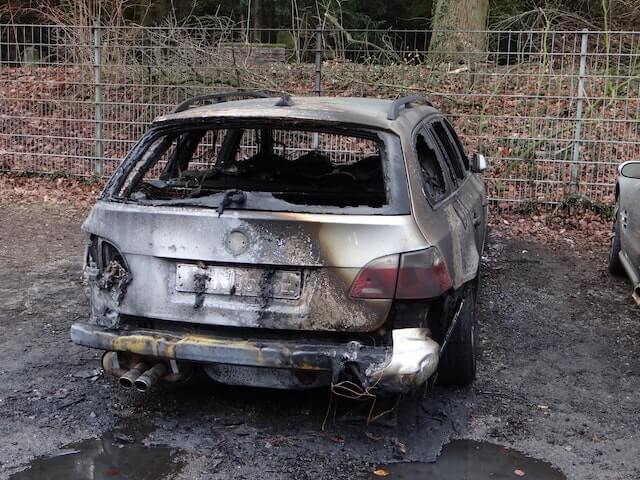What is comprehensive car insurance?
Comprehensive coverage covers damage to the insured vehicle. It protects against losses that are not collisions (that’s what collision coverage is for).
Comprehensive coverage insures the vehicle against things like:
- Vandalism or theft
- Weather damage (like hail or windstorms)
- Fire
- Hitting a live animal
- Falling or flying objects
Comprehensive car insurance is optional in most provinces. The only exceptions are Saskatchewan and Manitoba, where it’s mandatory. It’s also a requirement if you lease or finance your vehicle, regardless of province.
Comprehensive policies also frequently cover the vehicle’s windshield and other glass.
Commonly, glass coverage will pay for you to repair small chips and dings in your windshield without you having to pay a deductible. Your insurance provider might offer extended glass coverage, potentially allowing you to replace the whole windshield at no cost. Or, you may choose to exclude coverage for your vehicle’s glass in order to reduce your premium — this is common in regions where road conditions lead to such frequent glass damage that the windshield is basically a consumable item.
Comprehensive claims don’t deal with fault (more on that in the next section). For that reason, making a comprehensive claim typically does not affect your insurance premiums. However, if someone makes frequent claims, their insurance provider may decide to raise their rates, increase their deductible, or remove some coverages entirely.
Comprehensive vs. collision coverage
Comprehensive and collision coverages both exist to protect the insured vehicle itself. Together, these two coverages insure the vehicle against just about any source of accidental or unexpected damage.
We’ve explained what comprehensive coverage is for: damage caused by things that are not collisions. Appropriately, collision coverage is for damage that does result from collisions. Collision coverage applies if your vehicle is damaged in an accident with another vehicle, or after striking an object or the road surface.
Note that colliding with a live animal falls under comprehensive coverage, despite the collision aspect.
Here are some example scenarios in which you’d make claims under comprehensive or collision coverage:
| Comprehensive coverage |
Collision coverage |
- A hailstorm damages your car
- You strike a live animal while driving
- Your car is stolen
- A tree falls on your car
|
- You rear-end another vehicle at a traffic light
- You swerve to avoid an animal and run into a safety barricade
- Another vehicle dents your car while it’s parked
|
We’ve got a complete article about collision coverage for a more detailed dive into that.
Comprehensive and collision coverage are optional in all provinces except Saskatchewan and Manitoba. However, you’ll probably still need both if you lease or finance your vehicle. There’s also Direct Compensation Property Damage (DCPD), which exists in some provinces and covers damage from collisions for which the insured driver is not at fault.
People with low-value vehicles often decline comprehensive and collision coverage to save money. After all, the policy will only pay the vehicle’s actual cash value under either coverage, which may not be enough to repair or adequately replace it. Comprehensive coverage is typically more affordable than collision. So, keeping it (without collision) is another option to save money while maintaining at least some coverage for major losses of the whole vehicle, like theft and fire.
Another difference between comprehensive and collision coverage is fault determination. In a collision, there’s usually someone to blame for the accident—or multiple people. In such cases, the person or people at fault are responsible for losses sustained in the collision.
For example, if someone runs a red light and T-bones your car, the damage is probably their fault. Accordingly, they (and their insurance) will be responsible for covering your repairs. For damage to your car that’s your own fault, you’d need to make a collision claim.
Such considerations don’t exist in comprehensive claims, which are usually no-fault. If a windstorm knocks a tree onto your car or a deer leaps in front of it, there’s really no one to blame. Even if there is someone to blame (like damage from vandalism), it’s still a no-fault situation (for you). The fault system in car insurance only applies to traffic accidents.


